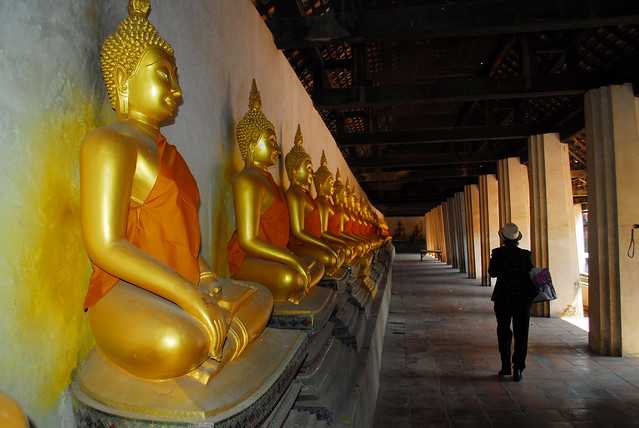Wat Phutthaisawan
Tags : Buddhist Temple
Timings : 8:30 AM - 5:00 PM
Time Required : 1-2 hrs
Wat Phutthaisawan, Ayutthaya Overview
Wat Phutthaisawan is one of the most magnificent temples in Ayutthaya, located on the west bank of Chao Phraya River, opposite Koh Mueang. It was a monastery built to commemorate the founding of the first capital city of Ayutthaya and was sanctioned by the first king of the Ayutthaya kingdom, King Somdet Phra Ramathibodhi I. As per his orders, it was built on the location where his ministers and he used to stay before the city was established.
Historically, the geographic site has been a site of several battles, violent altercations and war strategies, with the King of Ava setting up encampment here in 1549. A by-product of the initiatives undertaken by King U-Thong, the first Ayutthayan king, Wat Phutthaisawan has held a significant position throughout history and has undergone renovations multiple times. Upon arrival, one has to walk through the newly constructed buildings to access the older and original monastic structures, housing Buddha images in various shapes, sizes and positions. During the Burmese invasion of 1767, the temple was vanquished by the invading forces. Yet, it survived the test of time to its present form.
Read More on Wat Phutthaisawan
Architecture of Wat Phutthai Sawan
The temple complex had been earlier housed within a set of outer boundary walls. With the entry in the east, the temple vihara was the first magnificent structure greeting its beholders. The entire complex has obvious style influences from the Khmer, the obvious being the conical-shaped prang. Mandapas surround the prang on the northern and the southern ends. A square cloister surrounding the prang houses several Buddha images on embellished bases. A passageway, identified as porticos, lead to the gallery with seated Buddha figurines.

A dynamic and interesting feature, mentioned above, is the prang. This structure represented the mystical Mount Meru. Centrally located and built on an indented and raised pedestal, the pedestal has the typical early Ayutthayan wing-like formation. The smaller hall inside the prang is accessible via a porch, connected by staircases on the eastern and western ends. This hall continues to house a Buddha image. The hall and ceiling are decorated with painting, embellishment and decor from a fairly early period. This prang was restored during the Rattanakosin period by King Rama V.
Another important structure is the ubosot or ordination hall, restored in the late 1950s. This structure continues to be in use under the monastic order. There are smaller viharas around the complex, one of which houses the famous reclining Buddha image. Restored multiple times throughout the golden age of Ayutthaya, the chedis are a testament to these ongoing architectural endeavours.
Beyond the outer boundary walls, one can locate the quarters of the monks. Also, important is a two-storey residential building of a senior monk (with murals depicting deities, hermits, the ten Jatakas and the owner's pilgrimage to a Buddhist site in Ceylon ), which went on to inspire Jim Thompson's silk shop in Bangkok.
Historical Facts
Highlights
The centrepiece is beautiful along with intricately designed prahars, mandops, series of chedis, viharns, and other parts. There is a rich and interesting history behind the statue of King-U-Thong (Ramathibodi I) and the local people seriously believe that Ramathibodi’s spirit is still in there. The building was restored by the government of Field Marshal Phibun Songkhram in 1956, but the monastic structure is still in use. With a profound history in place, the statue of the Reclining Buddha is very famous here. Each direction of this place, including the viharas, have rich historical stories attached to them.
How To Reach Wat Phutthaisawan
It is slightly harder to reach this site, while in Ayutthaya. Ferry services are not accessible here due to the ongoing cargo trade in the region. If one wishes to make a successful day trip of the excursion, do include Wat Chai Wattanaram in the list of desired tourist destinations. It's located just a bridge away! An alternative route is taking the ferry ride to southeastern Ayutthaya Island, i.e., U-Thong Soi 15. Depending upon the water level, they'll decide if bikes are allowed onboard.
